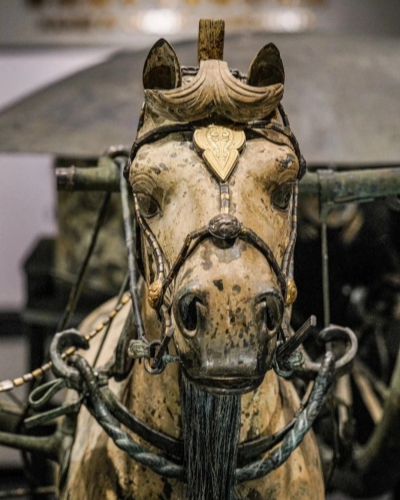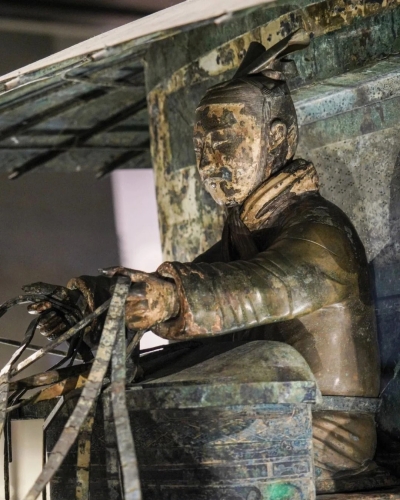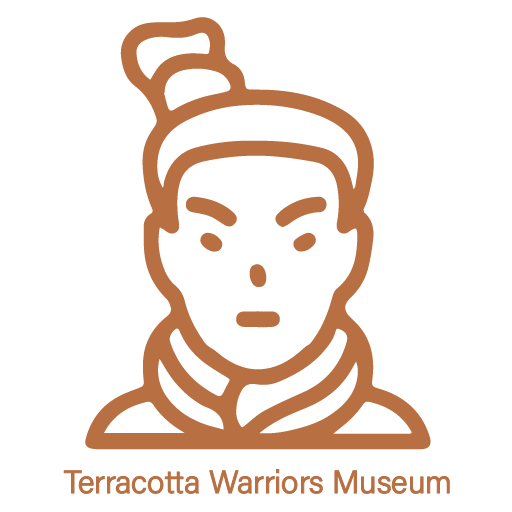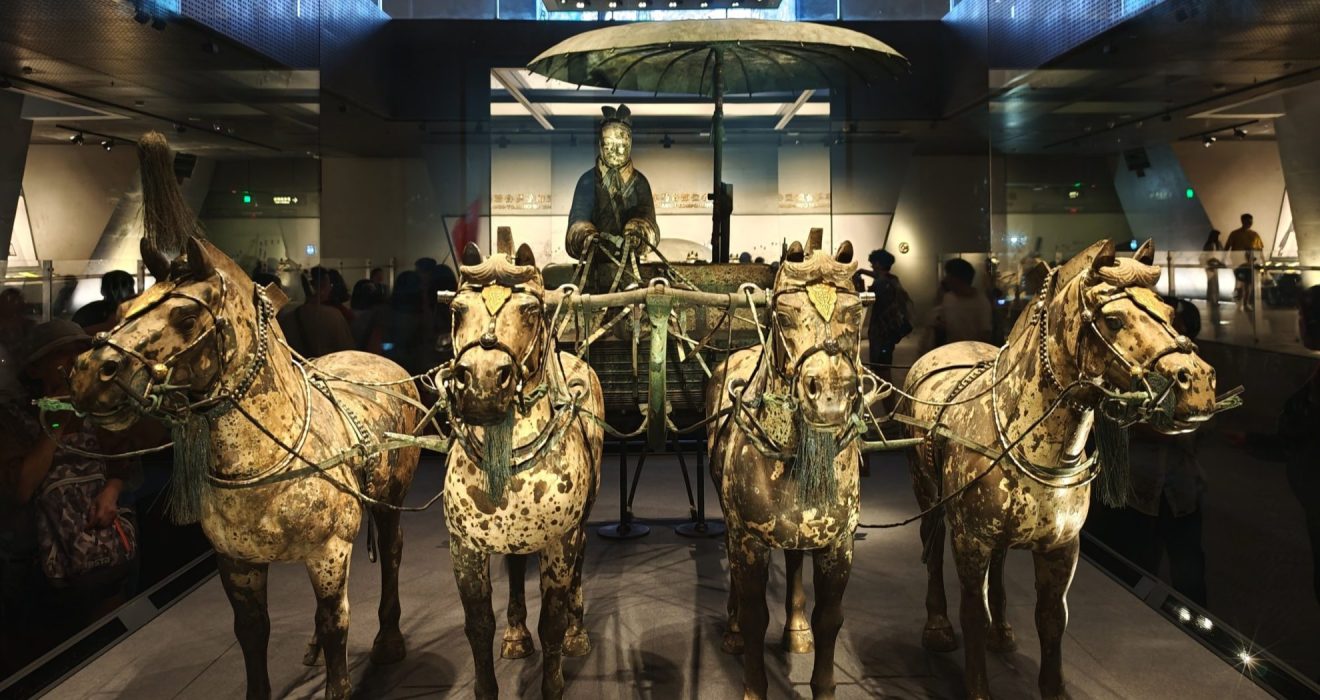Bronze Chariots & Horses Exhibition Hall
Located just 240 meters from the excavation site within Qin Shi Huang’s Mausoleum, the Bronze Chariots & Horses Exhibition Hall provides visitors with a firsthand archaeological experience. The museum occupies approximately 8,000 square meters and includes an underground floor. The building also features a green roof that seamlessly integrates into the surrounding landscape, with a large grass slope rendering the structure nearly invisible from above.
No. 1 Bronze Chariot & Horses
The No. 1 Bronze Chariot serves as the leading vehicle, featuring a large umbrella designed to provide shade. This umbrella is notable for its flexible and rotatable handle, making it the earliest known sunshade. A driver stands beneath the umbrella, holding the reins of the horses. The chariot and horses are adorned with intricate colored designs and embellished with gold and silver ornaments weighing over 3,000 grams (6.6 pounds) and 4,000 grams (8.8 pounds), respectively.
Measurements:
Length: 225 cm (89 inches)
Height: 152 cm (60 inches)
Weight: 1,061 kilograms (2,340 pounds)

No. 2 Bronze Chariot & Horses
The No. 2 bronze chariot is larger than the No. 1 and features an enclosed design. Its horses are lavishly decorated with gold and silver adornments. The chariot includes three windows—one at the front and one on each side—and a rear door that can be opened or closed. Its umbrella-shaped roof symbolizes the round sky, and it has a kneeling figure serving as the driver.
Measurements:
Length: 317 cm (125 inches)
Height: 106 cm (42 inches)
Weight: 1,241 kilograms (2,736 pounds)

Advanced Manufacturing Techniques in Qin Bronze Chariots
- Qin artisans employed a variety of exceptional techniques during the manufacturing process, including casting, soldering, and riveting. The bronze chariots and horses consist of over 5,000 individual components, each fully independent.
- Innovatively, craftsmen broke down complex parts into simpler pieces, manufacturing these separately before assembling them into a cohesive whole. For instance, the horse’s headstall is constructed from 82 and 78 tiny gold and silver tubes, each flat and measuring just 0.8 centimeters (0.3 inches) long.

Vibrant Colors of Excavated Chariots
- The two excavated chariots feature stunning colored designs that highlight their beauty and grandeur. These chromatic decorations cleverly mask any signs of repairs and also help to slow down the oxidation of the bronze.
- The primary color is white, with blue and green being frequently used on the bronze carriages. The eight white horses attached to the chariots have pink mouths and nostrils, while the drivers are depicted with blue-black hair, pink faces, and long sky-blue robes.

No. 2 Bronze Chariot and Horses


